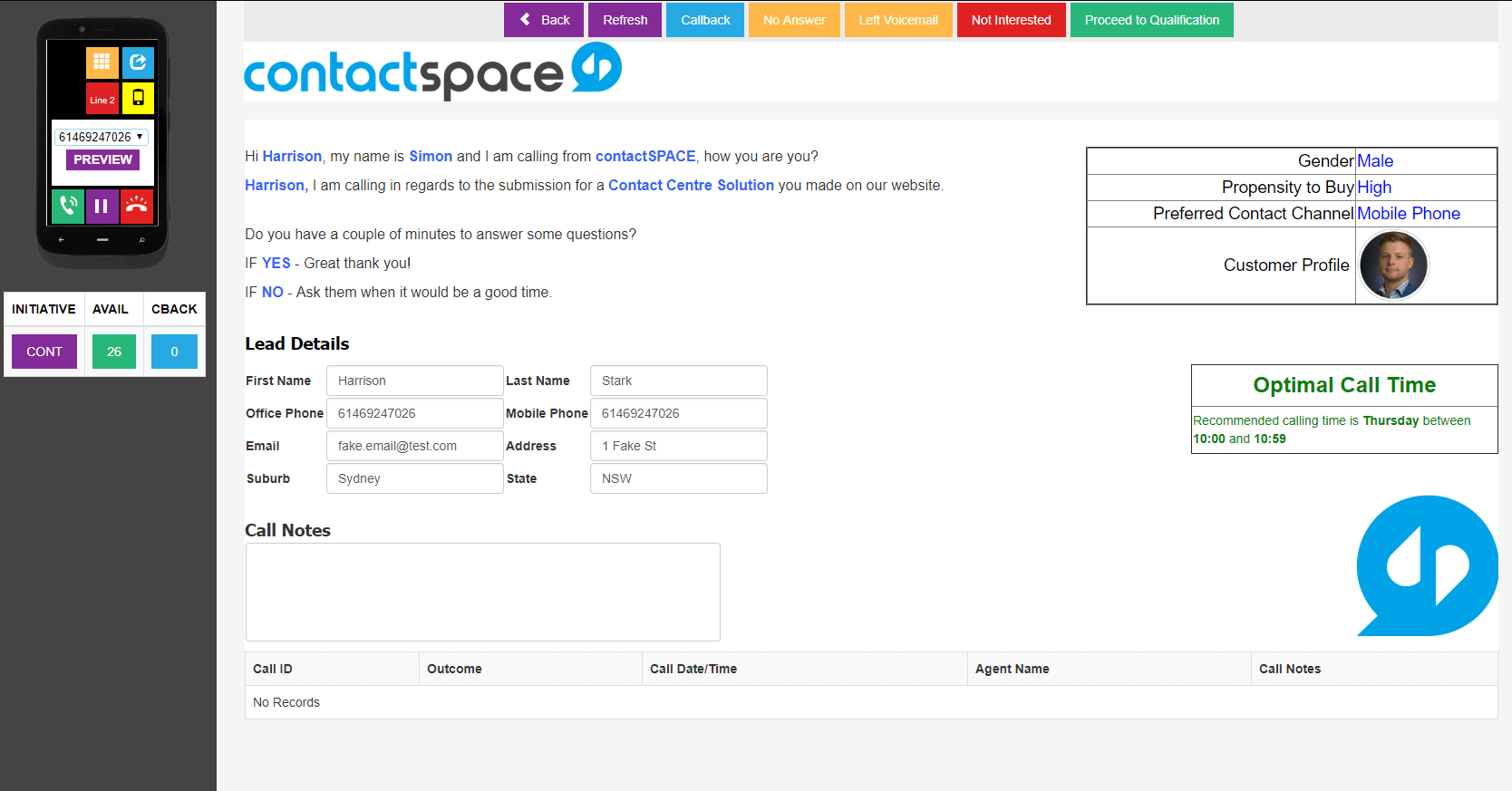Doing the same things you’re already doing – but more efficiently.
Sounds easy, right?
Many contact centres really struggle with business process improvement.
Even if you manage to find hours in the day to really plan more efficient methodologies, actually executing on the improvements is a whole other challenge.
Here’s what you can do to improve efficiency in your call centre processes – and fast.
The secret to process improvement

Before we dive into the specific strategies you can use to improve your business processes, let’s talk about what it actually takes to become more efficient.
There may be hundreds of processes you carry out on a weekly or daily basis in your contact centre, of varying granularity.
How do you decide which ones to focus on improving? Where is your time best-allocated?
Think about this: a small improvement, in a process you carry out all the time, can yield a big increase in efficiency.
Your job is to identify the tasks your team does the most often in your contact centre. Then, from this shortlist, identify those that can be quickly and easily improved.
From here, it’s up to you to implement strategies that can improve the speed with which you do things.
How granular you go, or how specific you get, in defining these processes, will depend on how much buy-in you have for improving efficiency.
If it’s entirely up to you as a manager to improve your business processes, then you’re a little more limited in what you can achieve. But with more room to manoeuvre, you can zoom out a little and target much broader sets of processes.
Here are the best call centre process improvement strategies.
1. Tracking your metrics
![]()
You need a plan (or a process) to monitor the metrics that matter most to your organisation.
If you don’t, you may be spending time keeping track of outcomes that do not make a material difference to how efficiently you’re operating. At times, it can be hard to sort the noise from what you actually care about.
Having a process in place also ensures that you get familiar with a certain set of KPIs – you know that a drop in time spent talking could mean a drop in data quality, for example. If you just have an assortment of random metrics, which are changed around all the time, it can be hard to derive meaning from what you’re measuring.
Here’s an idea to make your KPIs more meaningful.
First, define a primary set of metrics, around 5-8 different KPIs, that you like to keep an eye on constantly. Populate a dashboard with these key figures, and ensure that they’re super-visible to the people that you want to see them (either your team or team leaders).
Having a separate monitor is really handy for those managing larger teams. If you’ve got figures you want your team to see, getting a TV set up in a visible location can be a useful idea.
Then, define another group of secondary metrics (another 5-15) that you can use in specific situations.
Essentially, you’re building a toolbox – your hammer and saw are going to be the easiest to access, while other tools which you wouldn’t use as regularly might be nearer the bottom, ready for use in specific situations.
Ideally, you should also have a process for managing upticks or downticks in the metrics you’re monitoring. If pickup rates suddenly drop for instance, it could be time for some new numbers (also known as CLIs, which stands for calling line identification).
As you’re picking your metrics, think about what makes a good KPI – this way you can ensure that what you’re measuring is actually useful.
If you want to bring your team in, and make everybody more accountable for their KPIs, the challenge you now face is motivating your group. Apart from setting goals, how can you propel them forward?
One method you can use is gamification of your outcomes, in order to assign some additional recognition to agents who achieve outstanding results.
2. Call allocation and routing
![]() Transferring inbound calls takes time – a lot of time, if you’re dealing with a lot of incoming calls.
Transferring inbound calls takes time – a lot of time, if you’re dealing with a lot of incoming calls.
At a basic level, you can set up your PABX with different numbers for different departments. But not every caller is going to find the right number the first time. By their very nature, the PABX is quite inflexible, and is nowhere near as powerful as a fully-fledged contact centre solution. It cannot account for the specific skills of certain agents in allocating calls for example, and provides little visibility into what it’s doing.
The second thing you can do is use an IVR to ascertain the caller’s needs, and route them to the right agent this way. In fact, with the right IVR, you can skip the agent entirely – collecting payments for example without the caller even having to talk to anyone.
This is a fantastic way of reducing the amount of menial tasks your team is burdened with, and improving the efficiency of your operations.
You could even extend this self-help concept beyond just your contact centre. Does the customer have the ability to find information without calling you, on your knowledgebase or website?
On outbound, your challenge is ensuring that each record is assigned to the right agent. This can be about improving efficiency – in collections for example, you might want the person the most knowledgeable about the specific type of debt you’re trying to recover on the call.
Often though, it’s about improving the quality of the conversation and the relationship with the customer. This applies to inbound too – you want to define the different skills groups of your team. This allows them to play to their strengths, reducing the amount of “umm-ing” and “ahh-ing” on each call, and minimising the amount of time callers spend on hold.
On the contactSPACE platform for example, we have what we like to call CallGuides® – a way of defining how the user interface is set out based on the nature of the call being made, and who you’re calling (more on this below).
Getting the right people on each call and setting up the perfect IVR isn’t easy, and requires a quite powerful contact centre solution. However, it’s one of the things that separates good call centres from great ones – if you take the time to test and refine your call allocation, you should be on the fast track to massive productivity improvements.
3. Optimising agent workflows
![]() Under each initiative your team runs, each call should follow a relatively uniform structure, with potentially some different routes for different choices the contact makes.
Under each initiative your team runs, each call should follow a relatively uniform structure, with potentially some different routes for different choices the contact makes.
As a result, it’s possible to create an extremely streamlined process for each and every call, to ensure better-quality conversations on a more consistent basis.
You have to be careful not to over-prioritise efficiency in designing your agent workflow. Meaning, simple, static scripting (which may cost less time and money to set up) may actually cost more (in terms of lost conversions) in the long run.
There’s a balance to achieve here. While it’s important for agents to make as many calls as possible, they also need to be able to have quality conversations.
Here at contactSPACE, our solution to this problem is our CallGuides® module.
Essentially, the agent has everything they need (and nothing they don’t) at the touch of a button. As opposed to just static scripts, your team leaders can populate the interface with dynamic fields with record-specific data, as well as guidance for the call to keep agents on-message.

Plus, you can edit any aspect of this interface with our drag and drop editor – no coding knowledge or IT expertise required.
This flexibility is key. You can’t improve processes you have no control over.
But how do you know how effective your interface currently is?
Think about it:
- How long does it take new users to get used to it? If your interface is as intuitive as physically possible, you should be able to onboard team members in as little as 15-20 minutes. Onboarding is an equally-important business process in and of itself.
- Does every single design element contribute in some way to the agent’s productivity?
- How easy (or otherwise) would it be for you to change how something looked?
Also consider how you’re actually using your wrap data. Are you taking raw notes, or filling out a specific set of fields? How is this data utilised by your team?
Finally, for your previewing, think about the interaction between your contact rates and your preview time. Are agents spending just a few seconds previewing the record and then not making a successful call? Or spending too long previewing considering how long they are able to keep the person on the line?
What’s happening here could suggest what you need to do with the information you’re displaying – either adding more, removing some, or changing it.
4. Manage rostering

Your staff are your most valuable asset. Accordingly, they’re also your most costly.
But we’re not just talking about the dollar value of hiring and remunerating staff. It also costs a lot of time and money to actually manage your workforce.
You need a streamlined, efficient method of managing your rostering, and the hours your users are actually working.
If team leaders have to manage this process manually in a larger call centre, keeping track of time worked in a spreadsheet for example, this is going to eat into literally hundreds of man-hours each and every year.
Staff management is probably the single most significant business process in most contact centres. As a result, it’s an important thing to look at when trying to improve efficiency.
As we mentioned at the start of this piece, even little improvements in an activity that’s being performed all the time can lead to great results. Think about what your team is spending their time on in managing your callers, and look at ways you could reduce this workload.
For example:
- Using a software solution that reports on agent time logged-in, accounting for breaks.
- Having a system to manage rostering – adding, editing, removing shifts as easily as possible.
- Keeping track of who’s on your teams and what their roles are – especially important for larger contact centres.
When you’re looking at these sorts of activities, try to find menial, repetitive tasks. These are the areas you should be able to improve, as they’re the easiest to find ways of partly automating.
For instance, in this day and age, your software solution should be able to track and report on agent time worked, at a minimum. Also, having to complete payroll manually can get very time consuming if you have a large group of agents.
5. Training your team

Separate to staff management, you also need ways of ensuring that your team can improve their performance on an ongoing basis.
Of course, new hires also need to be trained so that they can get used to the way your team and your system works.
Creating a process to train new employees is fairly straightforward. You just need to think about the essential knowledge each new hire needs, and teach them how to apply it (perhaps with a mentor of some sort).
For other types of training, you’ll need to think more carefully about where your time is best-spent.
If you’re aiming to improve efficiency, it makes sense to use team-based training. Based on how your team is tracking, you can perform practical demonstrates to illustrate certain techniques – your KPIs might give you some ideas for areas you can improve.
For example, if you’re having trouble keeping the contact on the line long enough, you might want to show your team some methods they can use to engage interest and keep the call connected. Check out our training guide for further discussion on this topic.
However, the real challenge comes with improving individual agent performance. It’s simply not enough to just shotgun-blast your team with information – individuals need structured guidance to help them improve.
You need a way of quickly and efficiently identifying those who need help, and what they need help with.
Again, your metrics come in handy here. Look at the following:
- Contacts per agent.
- Revenue/conversions per agent.
- Time spent previewing/wrapping vs dialling/calling.
- First call resolution and conversions per agent.
These sorts of KPIs can give you some valuable insights into where your team needs a helping hand. From here, you should have a structure in place to provide targeted help. You could pair up your best performers will those who need assistance, or provide your supervisors with better intelligence to help them deliver targeted advice.
Finally, you need to monitor results. Establish a timeframe – if improvement is not being readily observed after a certain set period, you’ll need to re-examine your training techniques.
6. Handling callbacks

Your team has made or received a call, and scheduled a follow-up. Or a callback may have not been explicitly requested – the lead may say “not right now, but it’s something I might be interested in”. in customer service, this “soft” call-back could be your customer success catch-up – you may like to drop in and see how your clients are progressing every so often.
How do you define a process for these follow-up interactions?
In inside sales, what ends up happening more often than not is the rep creates a task in the CRM, essentially stating “follow-up with this person by this date”. This can be an effective way of handling these interactions for low-volume operations. However, it requires two things:
- Agents will have to “own” each contact. In most contact centres, this is not the best way of handling these interactions. Your contacts really want to be in touch with your team, not a specific person. Attrition can also lead to massive issues in reallocating all of your records.
- The agents’ lists of tasks cannot get too cluttered. If there are too many tasks for them to deal with, the follow-ups are going to be skipped. Especially productive agents may end up with more tasks than others if they’re calling more people and scheduling more callbacks, discouraging them from achieving more sales.
Unless you’re managing a relatively small number of leads, or agents have especially personal relationships with contacts, best practice is to set up team-based callbacks to improve efficiency. The one thing you need to make this work is adequate reporting of any prior interactions, so your team can account for these previous communications.
On the contactSPACE platform, you can schedule call-backs from the agent interface, which can be allocated either to the agent, the team they’re a part of, or another team in your organisation. Then, when the time is right, the record will be screen-popped, allowing the caller to preview the record, prepare as necessary, and dial when ready.
Callbacks tie back into call prioritisation. When dialling outbound, you need to have inbound calls, as well as callbacks, take priority over any lead allocation. Otherwise, you’ll be leaving some of your best opportunities stranded.
Conclusion

Your contact centre processes are a lot like a spider web. Everything affects everything else, which can make improvements that little bit more challenging.
The key to getting around this challenge is to carefully think through any changes you plan on making. Consider very carefully any prerequisites that need completing before making your first steps.
For example, you may need to upgrade your software solution before you actually have the ability to create the right dashboards for your team.
As a part of the planning process, you also need a way to measure the impact of the changes you’re making. Otherwise, you have no way of knowing if the new processes are any better than the ones they are replacing.
